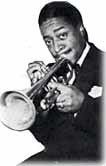Name Freddie Webster Role Jazz trumpeter | ||
 | ||
Albums One Guy Named Louis, Saturday Night Fish Fry Similar People Louis Jordan, Bill Jennings, Dallas Bartley, Wild Bill Davis, Charley Drayton | ||
Music group Tympany Five (Since 1941) | ||
Rare - Charles Mingus Octet - 1966 - Majonet
Freddie Webster (June 8, 1916 – April 1, 1947) was a jazz trumpeter who, Dizzy Gillespie once said, "had the best sound on trumpet since the trumpet was invented--just alive and full of life." He is perhaps best known for being cited by Miles Davis as an early influence.[1][2]
Contents

Webster was born in Cleveland, Ohio. He led his own band, which toured Ohio, before moving to New York City in the late 1930s. In New York City he worked with Benny Carter, Cab Calloway, Earl Hines, Jimmie Lunceford Billy Eckstine, and others. He also accompanied singer Sarah Vaughan and did two versions of his own song "Reverse the Charges".

He died of a heart attack in a room at Chicago's Strode Hotel; a heroin overdose was suspected in his death. In his autobiography, Miles, Davis claimed that Webster used heroin that was deliberately laced with something poisonous, possibly battery acid or strychnine; that the heroin was given to saxophonist Sonny Stitt, by one of the people that Stitt had physically assaulted to get money to support Stitt's heroin addiction, and who was out for revenge; and that Stitt had then passed the heroin on to Webster, not realizing that it was poisoned.
